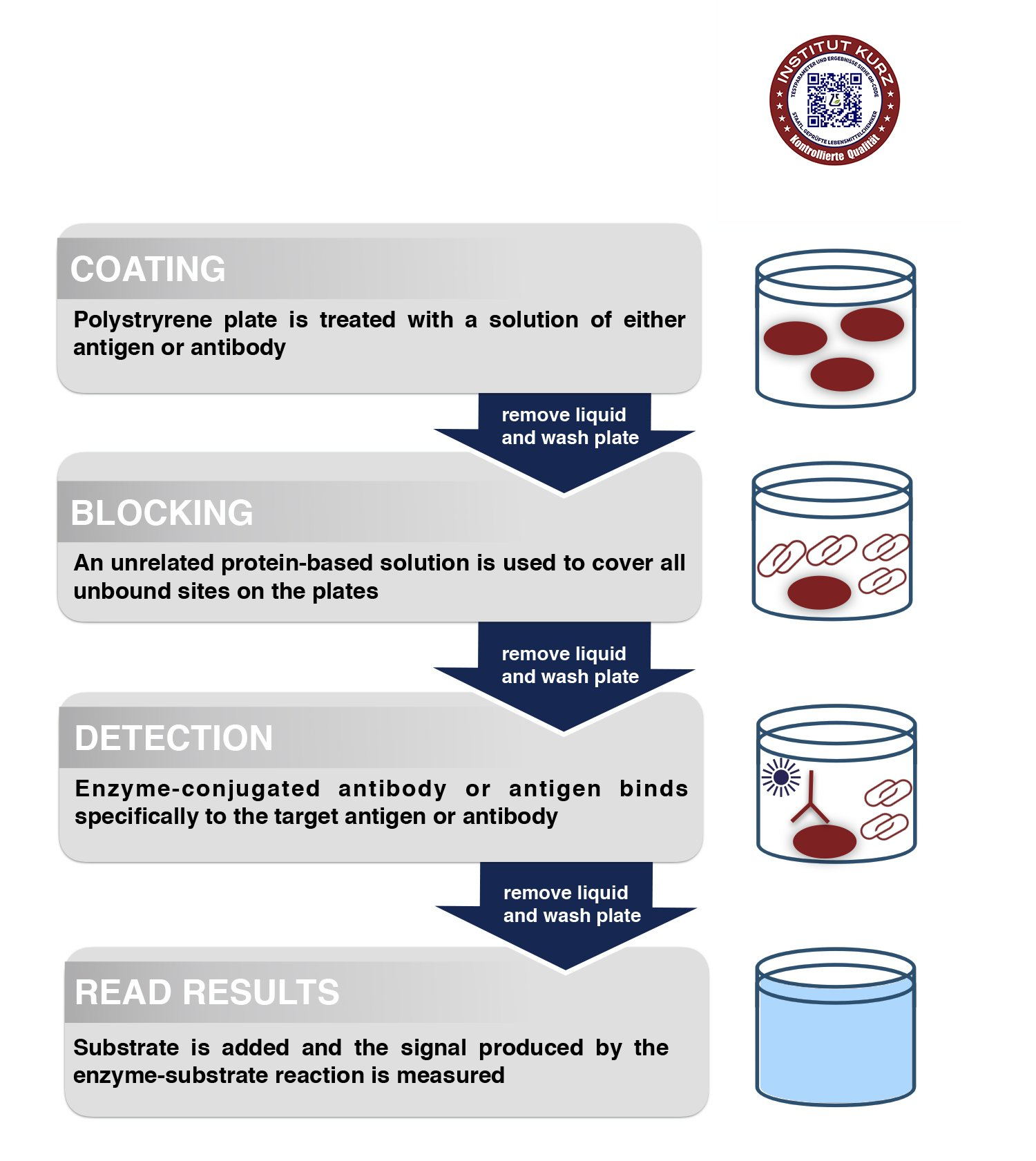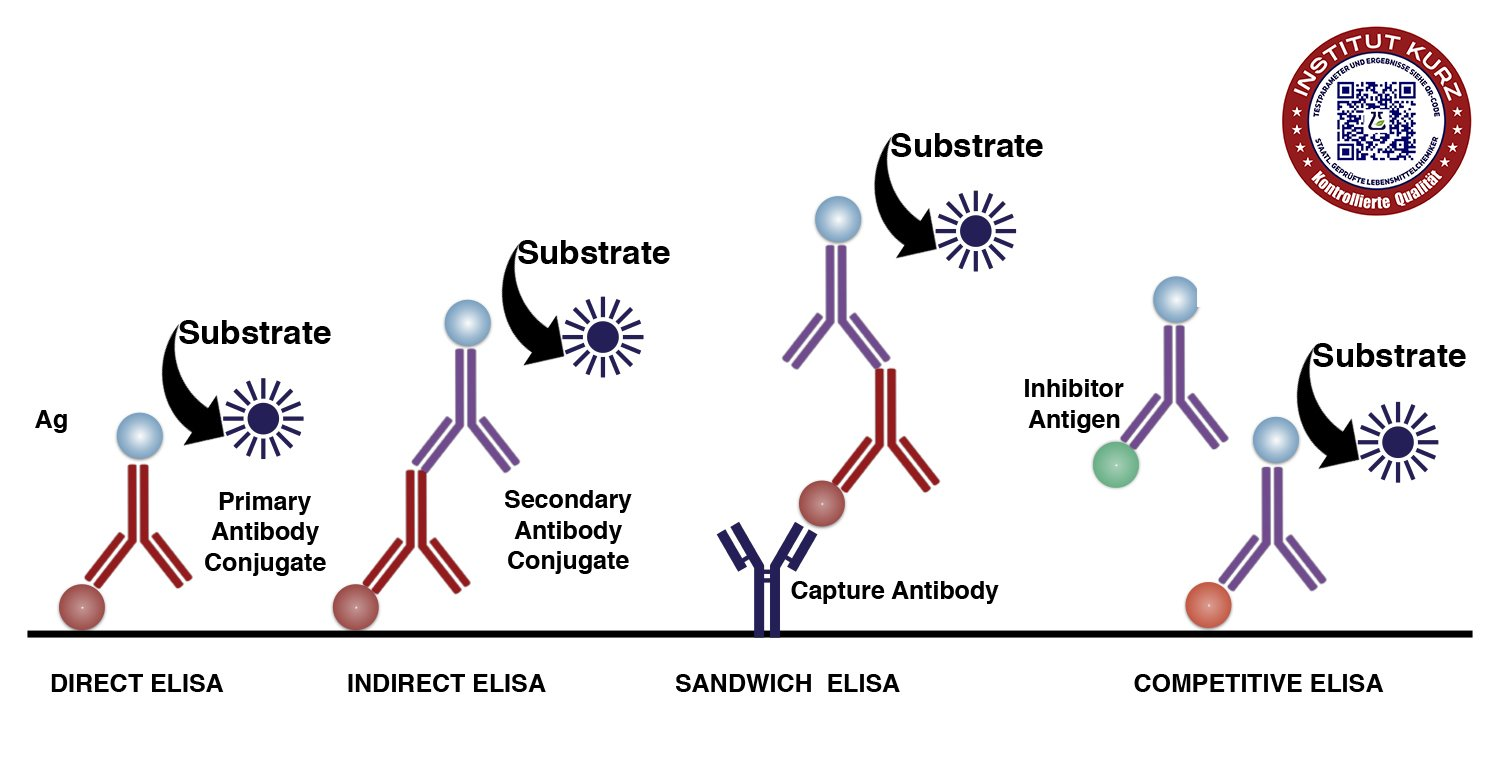INSTITUT KURZ
ELISA
ELISA Measurements
Test ELISA Laboratory
What is ELISA?
Enzyme-linked immunosorbent assay (ELISA) is a plate-based assay that detects and quantifies peptides, proteins, antibodies and hormones.
This assay is depend on specific antibodies to bind the target antigen and a detection system to indicate the presence and quantity of antigen binding.
Applicability
ELISA can be used to:
- detect the presence of allergens in food
- determination of concentrations of illicit drugs
- monitor the levels of pharmaceutical concentrations of drugs (medicines)
- pregnancy test
- diagnosis of various diseases that induce the production of immunoglobulins, such as infectious, autoimmune diseases or allergies.
How is the procedure?
In this assay, an antigen is immobilized to a solid surface and then complexed with an antibody that is linked to an enzyme. The detection is accomplished by assessing the conjugated enzyme activity via incubation with a substrate to produce a measurable product.
The most important element of the detection strategy is a highly specific antibody-antigen interaction.
The next figure summarizes the ELISA method steps.

Modifications in basic procedure
ELISA can be performed with some modifications to the basic procedure:
Direct - uses a labeled primary antibody that reacts directly with the antigen. The immobilization of the antigen of interest is done by direct adsorption to the assay plate.
Indirect - uses a labeled secondary antibody for detection. The immobilization of the antigen of interest is done indirectly via a capture antibody that has been attached to the plate
Sandwich - the analyte to be measured is bound between two primary antibodies (the capture and the detection antibody).
Competitive - is commonly used when the antigen is small and has only one epitope, or antibody binding site.

Contact us
Request an offer from us and we will get back to you as soon as we can.

We want to hear from you
We will get back to you as soon as possible
Please try again later
+49 (0) 2 21 - 22 25 120
50829. COLOGNE
info@institut-kurz.com
info@institut-kurz.de
©Institut Kurz GmbH
Nattermannallee 1 ·
50829. COLOGNE